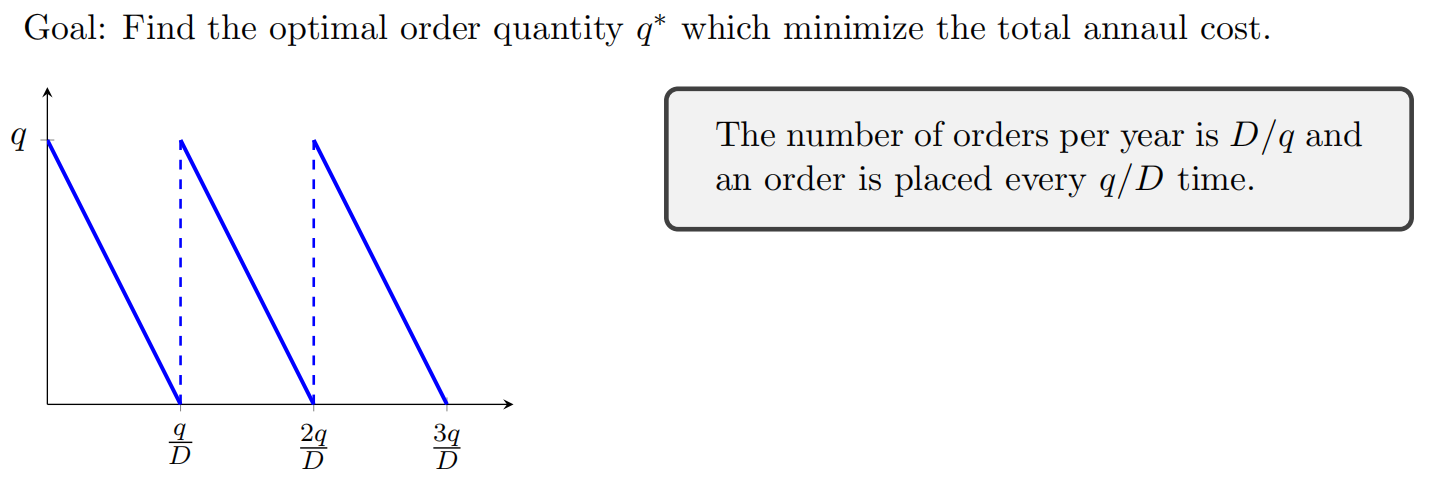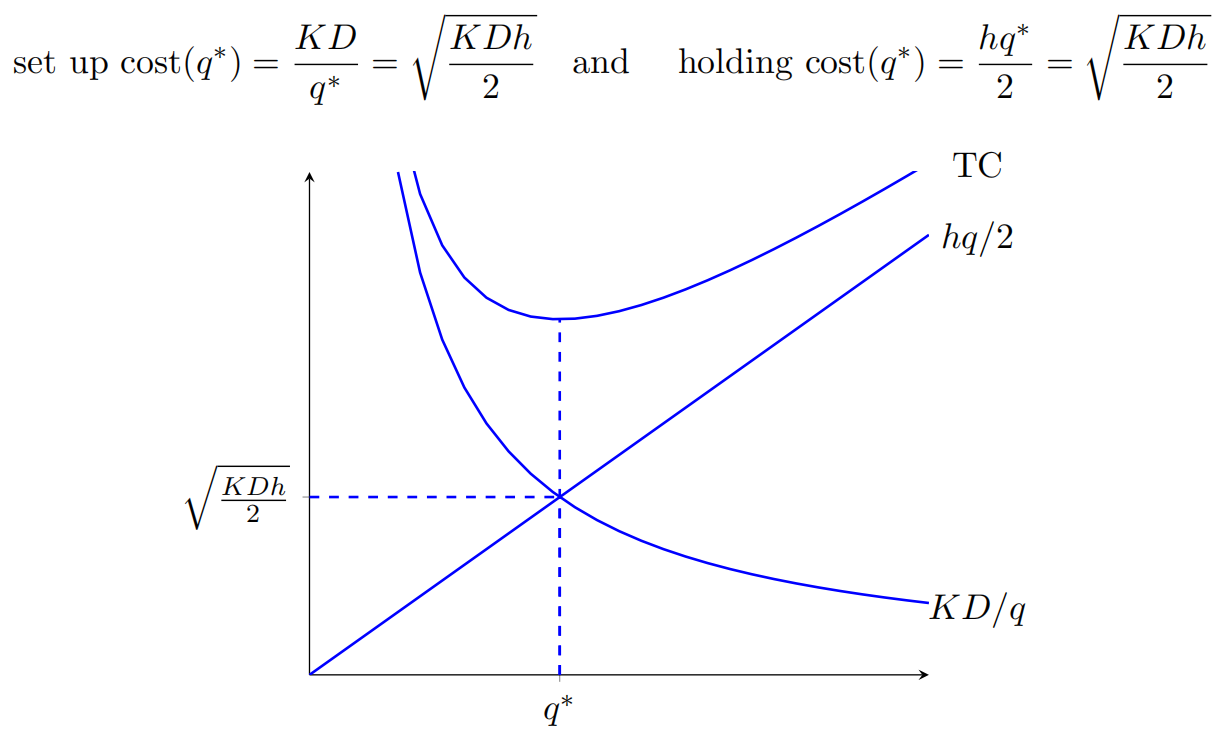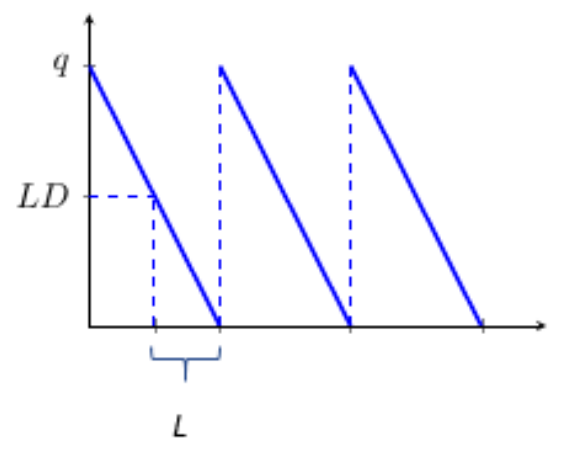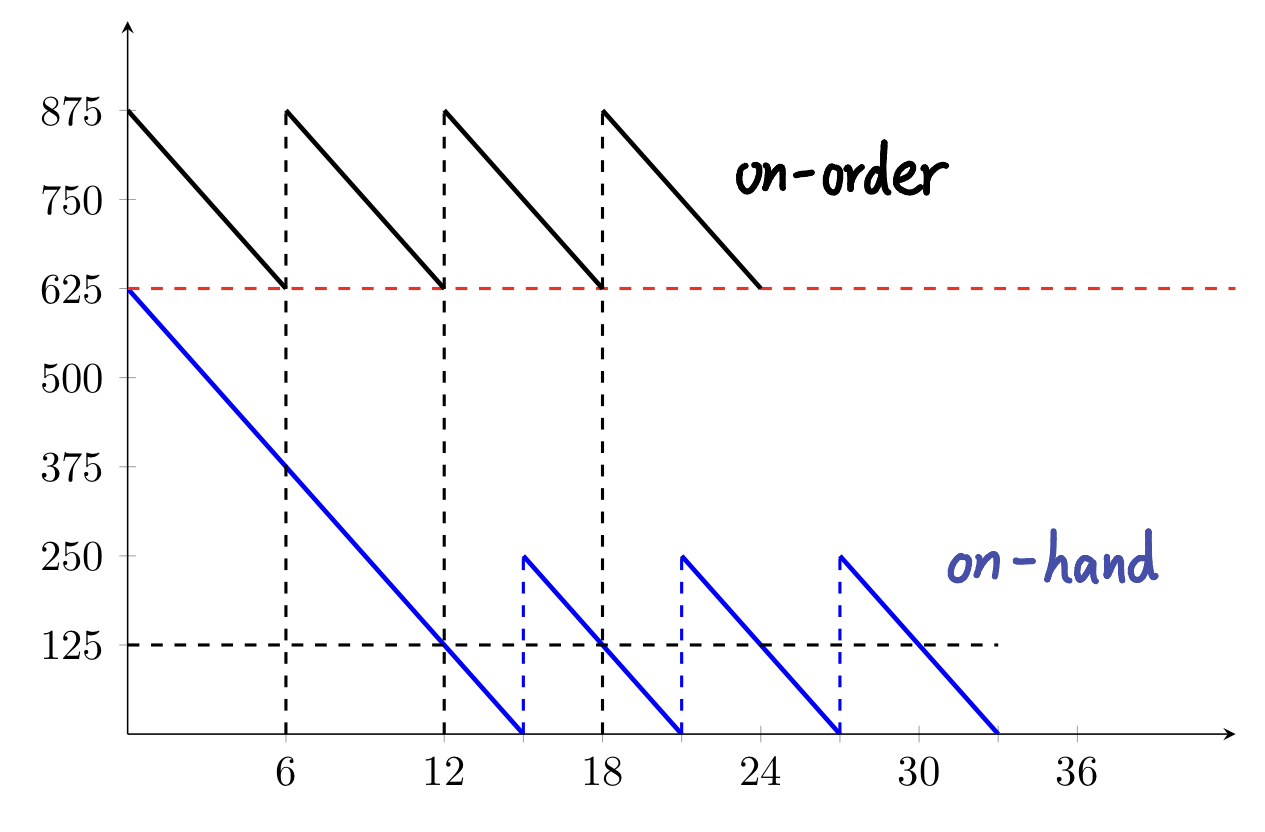1. EOQ Model
Notations & Assumptions: $t = 1$ means one year.
- $D=D(1)$ yearly demand (deterministic and constant)
- $q$ decision variable (order size)
- $p$ unit cost
- $K$ set up cost per order
- $h$ is holding cost per unit per time
- $L=$ lead time (下订单后运到仓库所需时间)
- no backorder, no shortage
What is backorder? A backorder is an order for a good or service that cannot be filled at the current time due to a lack of available supply. The item may not be held in the company’s available inventory but could still be in production or in transition

1.1 General Case (Lead Time = 0)
EOQ(Economic Order Quantity) \(\boxed{q^*=\sqrt{\frac{2KD}{h}}}\)
How we get that?
Let $TC$ represent the annual total cost. Note that this total cost depends on $q$, thus: \(\begin{aligned} TC(q) &= \text{setup cost+annual purchasing cost+annual holding cost}\\ &= K\frac{D}{q} + pD + h\frac{q}{2} \end{aligned}\)
Then we could get EOQ by solving: \(\frac{d}{dq}TC(q)=-\frac{KD}{q^2}+\frac{h}{2}=0\)
Why EOQ is a minimization solution? second derivative > 0
Some interesting facts:
- Even the equation of $q^$ is not related to $p$, while $p$ will often affect $h$ and then affect $q^$
- The optimal $q$ is achieved when the setup cost and holding cost are equal 这是由 $TC(q)$ 的公式决定的,如果再加一项关于 $q$ 的公式就不会这么巧了

1.2 Lead Time > 0
When $L > 0$ and is a constant, we should place an order when the stock level is large enough to cover the demand during the lead time which is $LD$. Thus the reorder point $r$ is $r = LD$
- If $LD<EOQ$, $r=LD$
- If $LD>EOQ$, $r=LD\text{ mod }EOQ$

For a long lead time, the pipline cost(or trasit cost) is sometimes considered and is equal to $q(Lh)(D/q) = DLh$
How do we simulate an inventory policy with $LD>q$? Keep on-order inventory and place an order whenever the on-order inventory is equal to $r$ \(\text{on-order = on-hand + backordered(negative) + in-transit}\)
For example, when $q=250,r=625$, when start at on-hand inventory at $OHI=625$, we need to immediately order a $q$. Therefore our on-order inventory at start will be $q+r=875$

1.3 What if …?
What if $D$ is not a constant but a random variable? EOQ is recommended when
- squared coefficient of variantion (SCV) $=Var(D)/E^2[D]<0.2$
- OR standard diviation (std) $<0.45E[D]$
2. Gaussian Demand Process
Definitions: Let $D(t)$ represent the demand during time $t$ (in years) and $E[D(1)]=\bar{d}, Var[D(1)]=\sigma_d^2$. Then a Gaussian demand process has \(D(t)\sim N(t\bar{d},t\sigma_d^2)\)
反过来,如果说上述公式是从大时间的分布(1年)来得出小时间的分布,我们还可以用 CLT 来从小时间的分布得出大时间的分布:
- $n>30$, e.g. week to year use CLT weekly demand $X_i$ are idd with $\mu,\sigma^2$ $D=\sum_{i=1}^{52}X_i\sim N(52\mu,52\sigma^2)$
- $n<12$, e.g. month to year cannot use CLT but if monthly demand $X_i$ are idd and gaussian with $\mu,\sigma^2$ $D=\sum_{i=1}^{12}X_i\sim N(12\mu,12\sigma^2)$
Document Information
- Author: Zeka Lee
- Link: https://zhekaili.github.io/0007/03/02/ISYE6334-EOQ-Model/
- Copyright: 自由转载-非商用-非衍生-保持署名(创意共享3.0许可证)